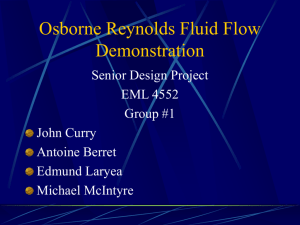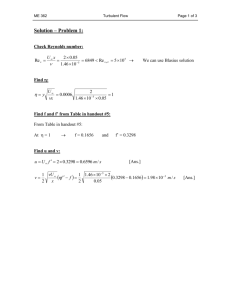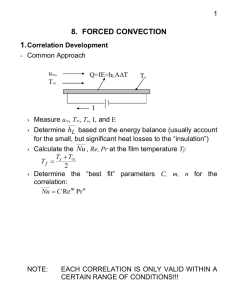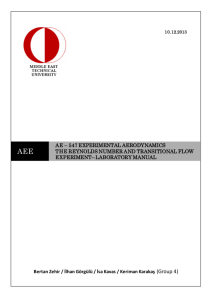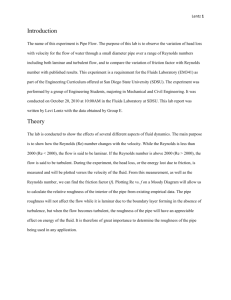GEOL 411 Final Report
advertisement
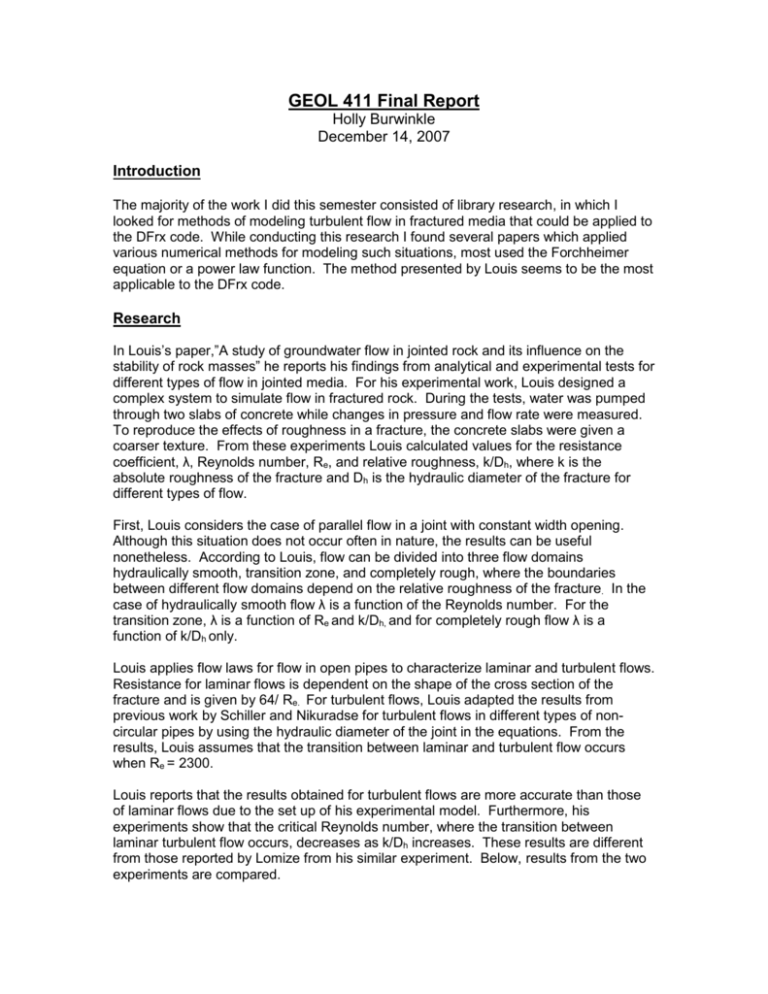
GEOL 411 Final Report Holly Burwinkle December 14, 2007 Introduction The majority of the work I did this semester consisted of library research, in which I looked for methods of modeling turbulent flow in fractured media that could be applied to the DFrx code. While conducting this research I found several papers which applied various numerical methods for modeling such situations, most used the Forchheimer equation or a power law function. The method presented by Louis seems to be the most applicable to the DFrx code. Research In Louis’s paper,”A study of groundwater flow in jointed rock and its influence on the stability of rock masses” he reports his findings from analytical and experimental tests for different types of flow in jointed media. For his experimental work, Louis designed a complex system to simulate flow in fractured rock. During the tests, water was pumped through two slabs of concrete while changes in pressure and flow rate were measured. To reproduce the effects of roughness in a fracture, the concrete slabs were given a coarser texture. From these experiments Louis calculated values for the resistance coefficient, λ, Reynolds number, Re, and relative roughness, k/Dh, where k is the absolute roughness of the fracture and Dh is the hydraulic diameter of the fracture for different types of flow. First, Louis considers the case of parallel flow in a joint with constant width opening. Although this situation does not occur often in nature, the results can be useful nonetheless. According to Louis, flow can be divided into three flow domains hydraulically smooth, transition zone, and completely rough, where the boundaries between different flow domains depend on the relative roughness of the fracture. In the case of hydraulically smooth flow λ is a function of the Reynolds number. For the transition zone, λ is a function of Re and k/Dh, and for completely rough flow λ is a function of k/Dh only. Louis applies flow laws for flow in open pipes to characterize laminar and turbulent flows. Resistance for laminar flows is dependent on the shape of the cross section of the fracture and is given by 64/ Re. For turbulent flows, Louis adapted the results from previous work by Schiller and Nikuradse for turbulent flows in different types of noncircular pipes by using the hydraulic diameter of the joint in the equations. From the results, Louis assumes that the transition between laminar and turbulent flow occurs when Re = 2300. Louis reports that the results obtained for turbulent flows are more accurate than those of laminar flows due to the set up of his experimental model. Furthermore, his experiments show that the critical Reynolds number, where the transition between laminar turbulent flow occurs, decreases as k/Dh increases. These results are different from those reported by Lomize from his similar experiment. Below, results from the two experiments are compared. Louis Laminar Turbulent Lomize 96 k 1 8.8 Re Dh 1.5 k 2 log Dh 1.9 1 96 k 1 17 Re Dh 1.5 k 2.55 log Dh 1.24 1 The compiled results from the experiments show that parallel flow occurs when k/Dh<0.033 and can be divided into four regions hydraulically smooth, laminar flow, hydraulically smooth, turbulent flow, transition zone, and completely rough flow. The boundaries for these four flow domains are determined by the Reynolds number and the relative roughness of the fracture. The transition between laminar and turbulent flow, Re=2300, was taken from the Lomize results and non-parallel flow occurs when k/Dh>0.033. Below is a graphical representation of the four flow regions and a table of the flow laws applied in these results. Applications Using the flow laws presented Louis’s work, modifications can be made to the original DFrx flux function to include turbulence. The DFrx flux function currently models hydraulically smooth laminar flows seen in 1. This function can be adjusted to model parallel, turbulent flows, 2,3 by , and similarly, the non-parallel flows, 4a-5b. In order to incorporate these flow laws into the DFrx model there must be smooth transitions from one flow domain to the next. This can be done using a sinusoidal function or, perhaps, the smooth Heaviside function used in COMSOL. Work in Progress Currently, we are working on setting up the model to work for the simplest case, parallel flows that transition from laminar to turbulent. The flux function is being modified to include both types of flow. For this to work correctly, we must find a transition function that will connect the two flow laws smoothly. Once the DFrx model works for laminar and turbulent parallel flows, we will implement the rest of the flow laws into the model and compare the results to data collected in the field.

